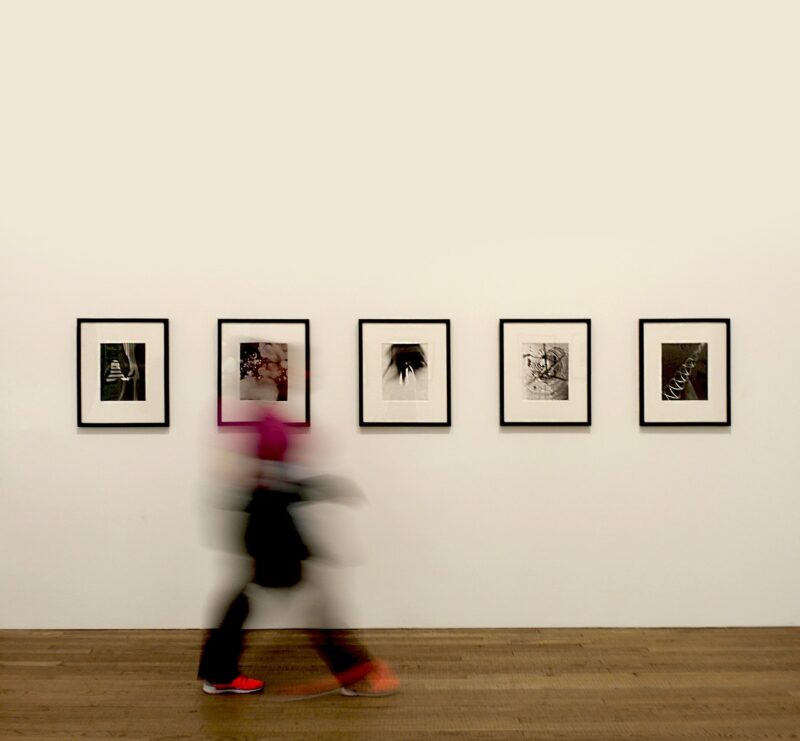
Modern art is a fascinating realm that invites us to challenge our perceptions and explore the boundaries of creativity. Among the vibrant landscapes of cities worldwide, iconic art galleries serve as beacons for artists and art enthusiasts alike, showcasing both groundbreaking works and traditional pieces that continue to influence generations. This article takes you on a journey to explore some of the most famous modern art galleries around the globe—each with its unique story and contribution to the art world.
1. The Museum of Modern Art (MoMA) – New York City, USA
Established in 1929, The Museum of Modern Art, commonly known as MoMA, is one of the most influential modern art museums in the world. Located in Manhattan, it houses an impressive collection of over 200,000 works, including iconic pieces by renowned artists like Vincent van Gogh, Pablo Picasso, and Andy Warhol.
MoMA is not just a museum; it is a cultural institution that has redefined the way modern art is perceived and appreciated. With its continuous efforts to showcase contemporary artists and innovative exhibitions, MoMA remains at the forefront of the art world. Additional highlights of MoMA include:
- Architecture and Design: Home to an extensive design collection that includes furniture, product design, and graphic design from different periods.
- Film Programs: Regular screenings of classic and contemporary films, exploring their contributions to the art of storytelling.
- Educational Programs: Offers workshops, lectures, and tours designed to engage the community and educate visitors about modern art.
As one of the most recognized modern art galleries, MoMA continues to inspire and educate millions each year.
2. Tate Modern – London, UK
Housed in a former power station on the banks of the River Thames, Tate Modern has become a landmark of contemporary art since its opening in 2000. With its vast spaces, it is dedicated to collecting and exhibiting modern and contemporary art from 1900 to the present day. Tate Modern is known for its innovative approach to showcasing art and engaging the public. Key features include:
- The Turbine Hall: This expansive hall is used for large-scale installations and site-specific art, showcasing works from artists like Anish Kapoor and Ai Weiwei.
- International Collection: Focuses on contemporary art from around the world, giving voice to various cultural practices and perspectives.
- Learning Programs: Engages with the community through educational initiatives, fostering a sense of involvement and understanding of contemporary art.
Through its ambitious programming and dedication to accessibility, Tate Modern continues to challenge preconceived notions of modern art and its role in society.
3. The Centre Pompidou – Paris, France
The Centre Pompidou, often referred to as Beaubourg, is a remarkable example of modern architecture and a hub for contemporary art. Opened in 1977, this cultural complex houses the Bibliothèque publique d’information (Public Information Library) and the Musée National d’Art Moderne, which is the largest modern art museum in Europe. What sets Centre Pompidou apart includes:
- Innovative Architecture: Designed by architects Renzo Piano and Richard Rogers, the building’s exposed structure and colorful pipes make it a standout landmark in Paris.
- Diverse Collections: Its permanent collection features works from famous artists like Henri Matisse, Jackson Pollock, and Marcel Duchamp, emphasizing the evolution of modern art.
- Cultural Events: The Centre regularly hosts film screenings, concerts, performances, and educational programs that engage the public beyond traditional exhibitions.
The Centre Pompidou stands as a symbol of artistic experimentation and modernist values, enriching France’s cultural landscape.
4. The Guggenheim Museum – Bilbao, Spain
Inaugurated in 1997, the Guggenheim Museum in Bilbao has transformed the city into a center for contemporary culture through its stunning architecture and diverse exhibitions. Designed by architect Frank Gehry, the museum’s avant-garde design has garnered numerous accolades and has become an icon of modern architecture. Highlights of the Guggenheim include:
- Dynamic Collections: Features an array of contemporary art, focusing on works from the 20th century to the present, including pieces from artists like Jeff Koons and Richard Serra.
- Cultural Impact: Its presence has spurred economic revitalization and tourism in Bilbao, leading to what is often referred to as the “Guggenheim Effect.”
- Sculptural Exhibitions: The museum’s outdoor spaces showcase large-scale sculptures and installations, making art accessible to a broader audience.
The Guggenheim Museum in Bilbao is not only an architectural marvel but also a vital player in contemporary art discourse.
5. National Gallery of Modern Art – Rome, Italy
The National Gallery of Modern Art, located in the majestic Villa Borghese, houses a rich collection of Italian modern art, ranging from the late 19th century to the 20th century. Opened in 1883, it showcases masterpieces by artists such as Amedeo Modigliani, Giorgio de Chirico, and Umberto Boccioni. Notable aspects of the gallery include:
- Historical Context: The gallery provides insight into the evolution of Italian art through significant movements, including Futurism and Metaphysical art.
- Exhibitions and Events: Regular temporary exhibitions allow visitors to explore themes and connections within modern art, enhancing their understanding of the genre.
- Cultural Heritage: As an important part of Rome’s artistic landscape, the gallery plays a role in shaping Italy’s cultural narrative within the global art community.
The National Gallery of Modern Art is an essential stop for those wishing to experience the depth and diversity of Italian modern art history.
Conclusion
Modern art galleries are not just spaces for exhibition; they are vibrant cultural hubs that foster creativity and engagement. From the iconic Museum of Modern Art in New York to the stunning Guggenheim Museum in Bilbao, each gallery offers a unique perspective on the evolution of modern art. As we continue to explore and engage with these spaces, we enrich our understanding of art and its place in society. Whether you are an avid art lover or a casual visitor, these galleries offer an invitation to witness the brilliance of human expression in all its forms.
With these celebrated institutions leading the charge, the world of modern art continues to evolve, inviting audiences to ponder, appreciate, and, most importantly, connect with the art of our time.







